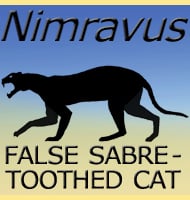Cynodictis
In Depth Cynodictis was an early member of the Amphicyonidae, a group of mammalian predators that are much better known as ‘bear dogs’. This is not all that surprising however when you consider that Cynodictis was also one of the earliest amphicyonids and usually the earlier members of a group are smaller than the later … Read more
